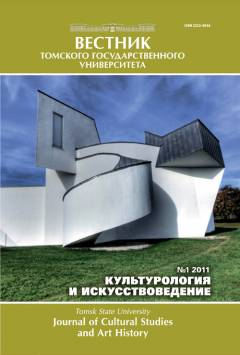Features network forms of organization of inter-agency cooperation between the authorities in solving socially significant tasks
Achieving the Millennium Development Goals in the region, the processes of modernization of the economy and social development requires the alignment of effective mechanisms of interaction between the different departments of power in order to solve the conjugate problems and challenges, as well as coordinating the efforts of all parties in promoting the interests of different social groups both in formulating and implementing social and economic policies and the solution of specific problems of the region. However, as practice shows, the interaction of different agencies in addressing related social issues is not carried out in the proper amount, which prevents rapid decision-making and delaying or even ignore social issues. This fact has several roots. The first is strictly hierarchic management system, which has its advantages and disadvantages. It is also influenced by the clear structure of powers of the authorities of each of the departments. Thus, the solution of social problems requiring interagency cooperation is faced with the question of the division of powers authorities. Fragmentation and lack of information in most cases issues related departments leads to a long-term decision-making and stagnation when the interdepartmental task. Understanding this perspective, perhaps, with the aim of stability and continuity, it is not necessary to radically change the structure of power, but it should take into account the practice of the network organization of the structural elements of the departmental authorities. Theoretical features of functioning and the differences of the network form of organization as the "liquid" from a traditional hierarchical structure is shown in the connectivity and continuous communication; horizontal organizations - the absence of a single center, or polycentric; inclusion, where every member of the network must constantly replenish and prove their feasibility; Equality; the relative openness of the input - output; focus on results and high efficiency; mutagenicity - adaptability to changes in the internal and external environment; the ability to self-organize and self-regulation; low resistance information. The dynamism and stability of the active centers, supplemented by pluralism internal networks provide a network structure of the multi-variant development strategies and solving various problems, problems. Speed is one of the characteristics of networking, essentially reduces the cost of information transfer, simplifies and accelerates the process of creating rapidly geographically dispersed social groups (networks), characterized by a predominance of non-hierarchical "horizontal" communication, the ability to communicate "all against all". Network performance and allocate decentralize decision-making, but inherited from the hierarchy of a high degree of relatedness (interdependence) in the group. The use of network structures in the power system can constitute as a multicenter system: with a relaxed and split the job hierarchy with a broad specialization of all members of the network. This raises the question of the level of the modern civil servant, able to assess not only the content of a particular department, and correlate it with other social institutions and authorities, as well as synchronize the processes taking place in different parts of the network.
Keywords
net structures, problems, efficiency, interaction authorities, network form, эффективность, проблемы, сетевые структуры, органы власти, взаимодействиеAuthors
| Name | Organization | |
| Gil Alexandra Yu. | Tomsk State University | gil_iik@mail.ru |
References
